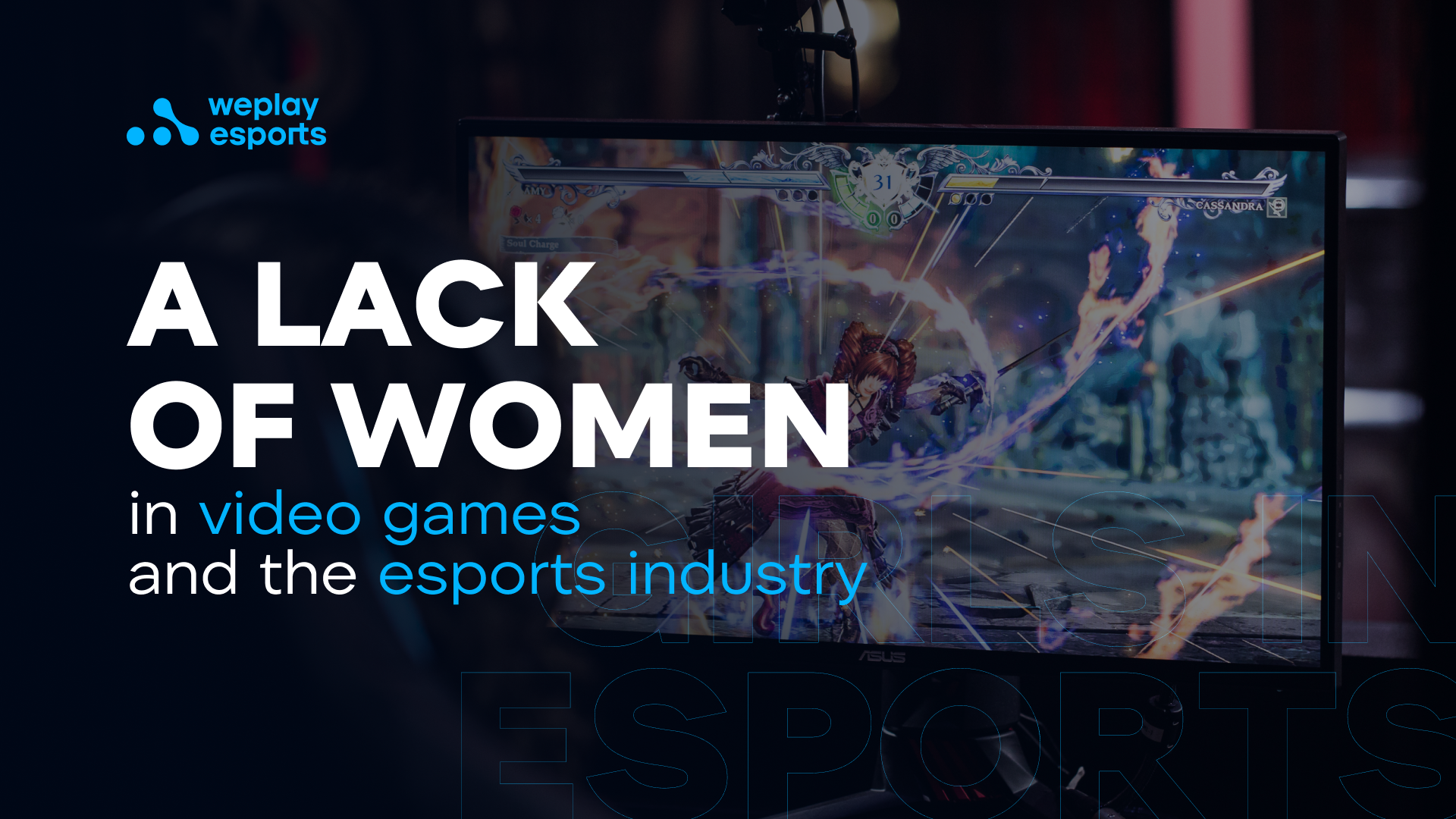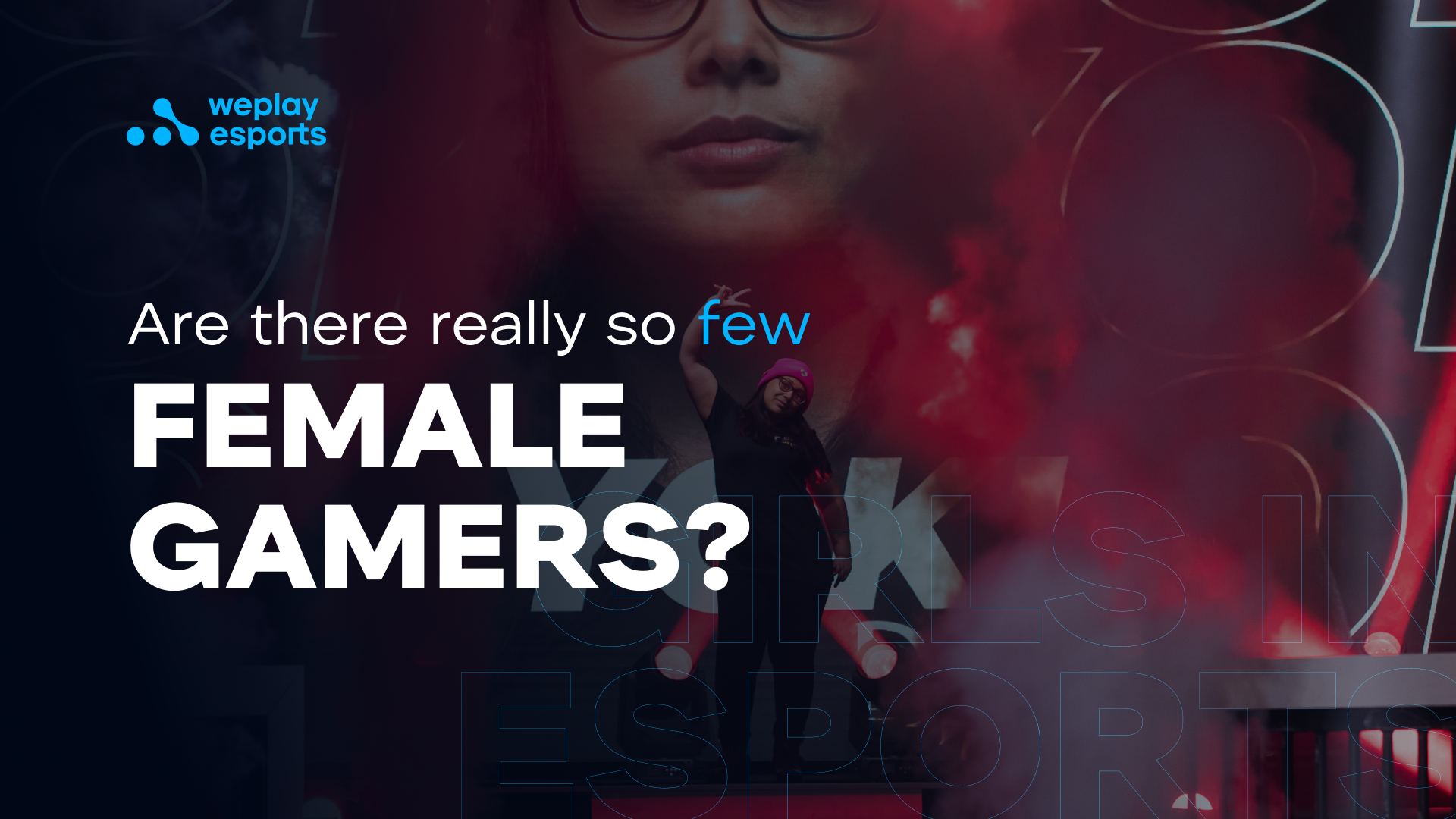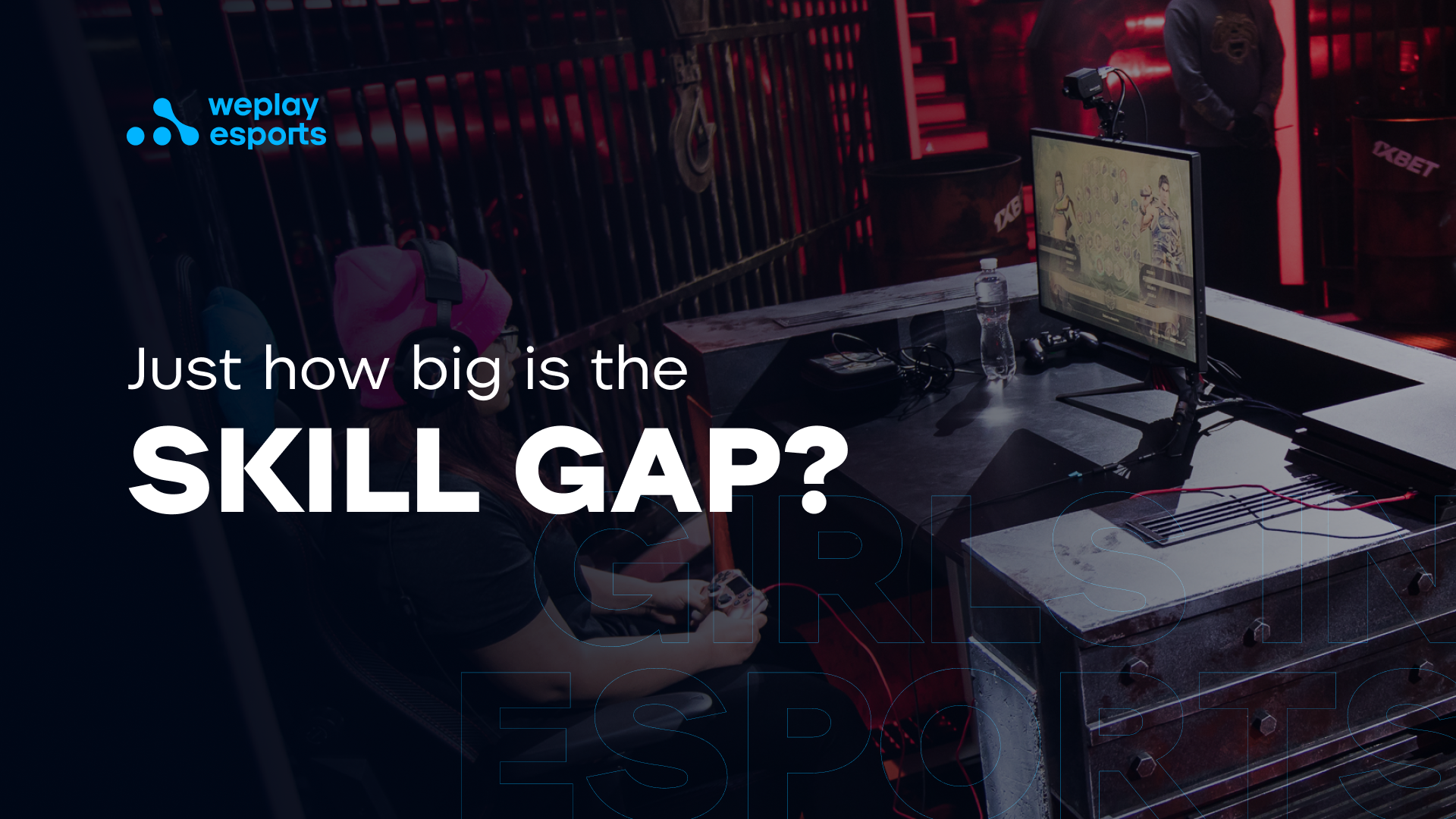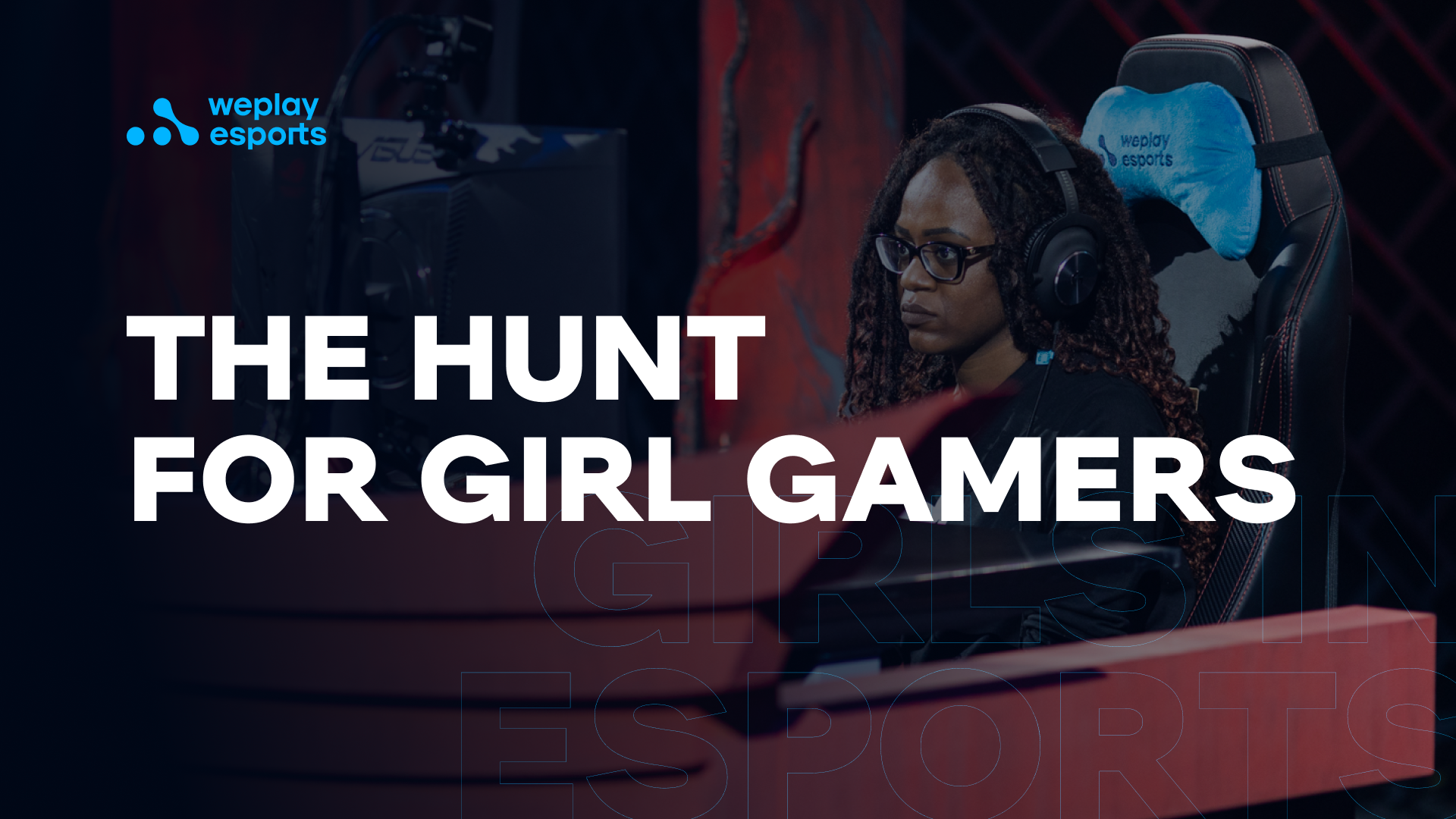Jan. 18, 2021
The Path of Girls in Esports
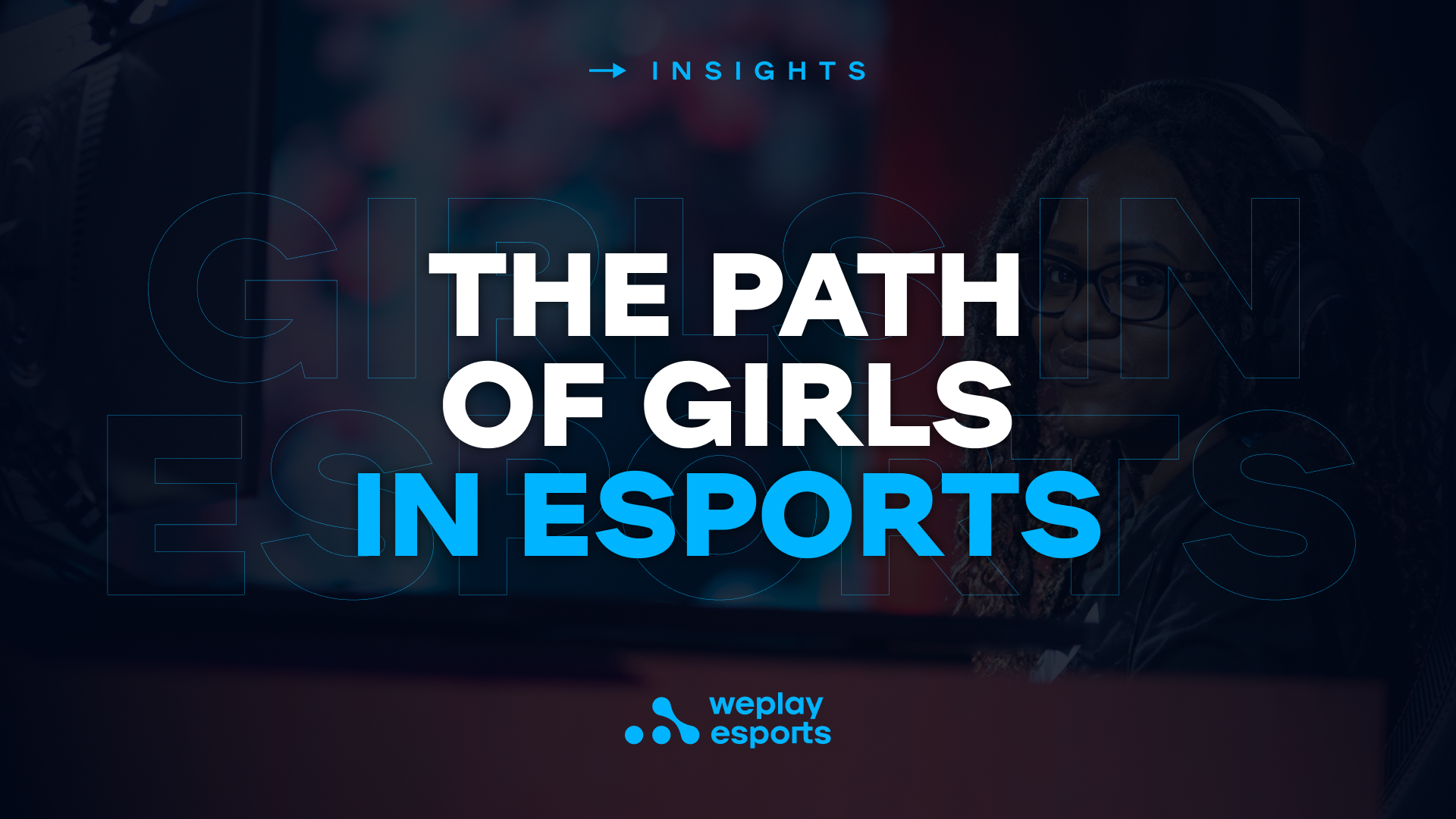
6 min read
Why are there so few female gamers and women in the esports industry.
To call the esports industry a male-dominated sector would be an understatement, but sports and industries have suffered from this imbalance as well. Activities like track & field, basketball, wrestling, and football now have divisions for both genders, but they too began with women relegated to the sidelines. However, in the case of esports where physical strength is not a reason for segregation, one must ask why there are fewer women in the industry.
A lack of women in video games and the esports industry
While both the video game and esports industries have talented career women, female professionals, and gamer girls in positions of power and influence, they are much fewer than their male counterparts. Be it in a corporate setting, broadcast team, or on the ladder of an esports tournament.
If this difference was due to genetics or something similar, it wouldn't be a problem, but there are no biological factors that prevent women from competing on an esports team or solo in a tournament. When you consider female gamers account for 35% of esport players around the world (according to global consumer insights agency Interpret), it makes you wonder why their presence isn't felt more strongly at events. Instead, we see top-tier teams and player rankings dominated by male players in every esports discipline.
One might argue that the skill ceiling is much lower for women in esports than men. If that really were the case, then we wouldn't have all the exceptional female gamers that have hoisted trophies at major events. Clearly, biology isn't the reason, so why then is the female pro gamer so poorly represented in the esports scene?
Underlying causes
To find an answer, first we need to go back to women's role in society leading up to the modern world. Often referred to as the "weaker sex", women have long suffered from misogyny in all its forms. Beliefs that they were inferior to men worked their way into religion, culture, and homes until society accepted this as the norm. It is years of these beliefs that women in esports have had to fight alongside their male counterparts in the office and on the stage. As a result, they have had more to prove and much more work to do.
Till today there are still complaints from women in esports about maltreatment at the hands of their male superiors and peers, with little to no repercussions for the perpetrators. This has led to women gradually losing the will to fight the seemingly insurmountable opposition until they leave the scene entirely or for a time. Feeling alone and vulnerable means they begin to avoid team training sessions (scrims), stop sharing insights with male teammates that tend to ignore them, and fail to attend boot camps or stay in assigned game houses because the living conditions aren't conducive for cohabitation.
Women are certainly different from men but just like we see with races, communities, and tribes, it is these differences that make us unique and special. Diversity brings variety to the world as a whole, and no one should be prevented from experiencing the good things in life simply because they are different.
There are varying opinions about why there are fewer women in the esports industry and even the video games' industry, but it is safe to say that if these male-dominated communities were more welcoming to the idea of women as equals, more women would feel at home.
Are there really so few female gamers?
Now we have an idea of the challenges women face in esports, but with statistics like 41% of players in the United States being female gamers aged 18-34 (Statista 2021), one might argue that this proves there are more women active in the industry than this article would have you believe.
Well, first of all, that figure is only for the US, and secondly, esports is only a facet of the gaming community. Besides competitive gaming, we also have casual, which predates esports and continues to grow each year.
Interpret's research also states that the female gamers that makeup 35% of esport players and 30% of esports viewership in 2019 were a 6.5% increase in numbers from 2016. These figures aren't climbing as quickly as you would expect because women gamers have a bigger interest in casual gaming than they do the highly competitive esports. This is evidenced by the female gamers that dominated gaming in 2019 by 66%.
Just how big is the skill gap?
One of the major arguments against the movement for more inclusivity in esports is the difference in skill level between the sexes. While male teams and players dominate at all levels of esports, female players do not have the same track record. Every event is an opportunity for a new female player to emerge that proves that girl gamers are just as talented, but to make a convincing argument more would need to make the journey to the top.
It seems like for every Sasha Scarlett Hostyn (StarCraft II legendary player), we have unfortunate stories too, like the all-female Russian League of Legends team Vaevictis Esports. The squad became infamous in 2019 after losing 52-2 in the League of Legends Championship League (LCL). Every day we see more and more female players enter the world of gaming, be it as streamers or esports players. They fill social media, YouTube, and Twitch, producing fun content that attracts hundreds of thousands of viewers.
The creation of women's leagues has had a divisive effect on the esports community as some believe this promotes segregation while those that have championed it believe it to be a safe environment to develop stronger female players. Esports games like Counter-Strike, Counter-Strike: Global Offensive, League of Legends, and Call of Duty have tried to nurture female esports through women-only championship series, and it has helped put the spotlight on more female players. Even the sim racing world has adopted all-women events, like last year's W Series Esports League.
However, the future of global esports is in inclusivity with esports leagues that no one can call a publicity stunt because the female pro gamers are just as strong as the male players. This way fans can be assured of the best experience every time throughout the esports scene. Women continue to prove naysayers wrong, like Hearthstone Grandmasters winner Xiaomeng “VKLiooon” Li and TwitchCon 2019 Fortnite Twitch Rivals MVP Tina "TINARAES" Perez. With role models like these appearing to prove that any girl can thrive in professional esports, gaming events around the world should become more welcoming to the female pro gamer.
The hunt for girl gamers
For everyone interested in seeing more inclusivity in esports, the hunt for more girl gamers continues, and considering some of the numbers we've shared, they are certainly out there. To help inspire many women to join the numerous esports tournaments hosted every day and give more esports teams a reason to add more diversity to their rosters, you can take a look at WePlay Esports' Girls Got Game series by Albina Krugliak. She even shares her own insight on the topic here.
At WePlay Esports we will continue to support women in esports that choose to build successful careers in an ever-changing market.
